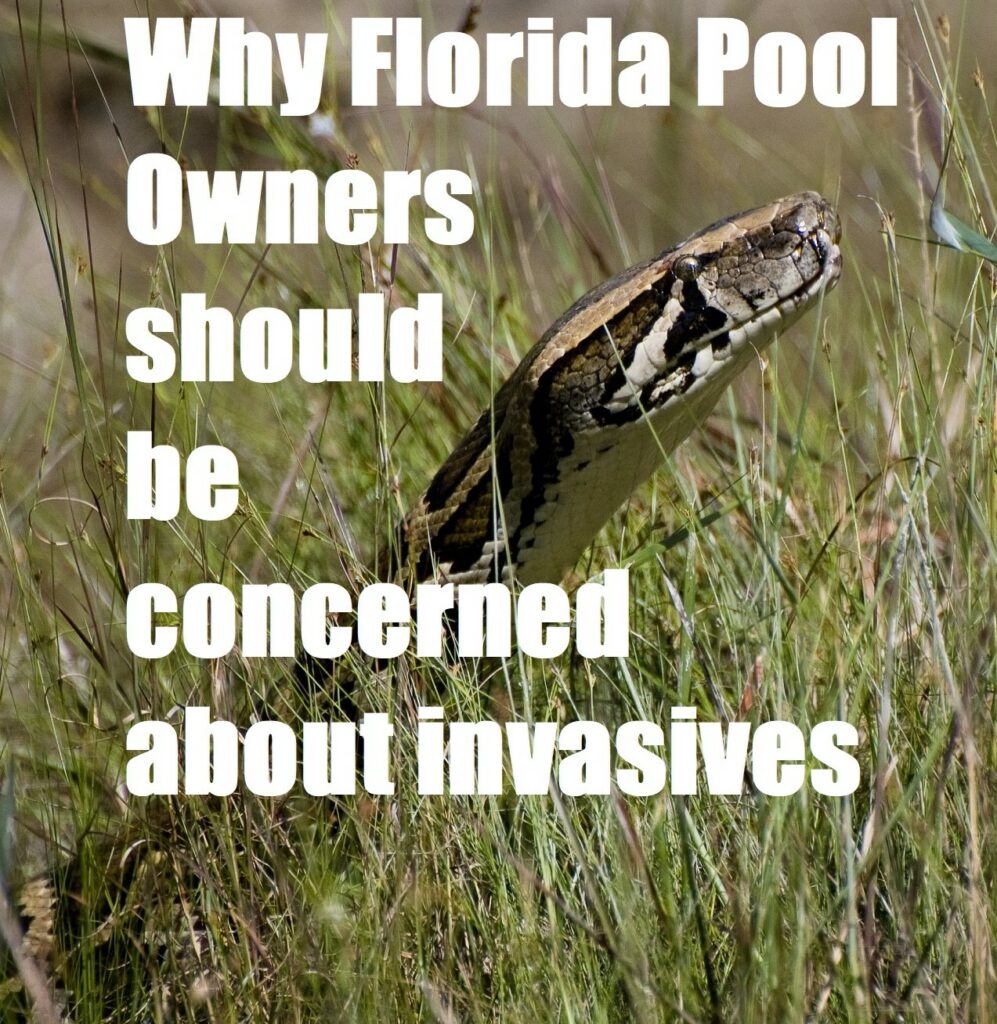See You Later, Alligator?
It’s only a matter of time before more alien species, like others released into the wild from the pet trade, begin to expand beyond the Everglades and into people’s back yards. Florida swimming pool pros realize that alligator and snake encounters come with the territory; however, in recent years, non-native species (see below) have made their way onto the list in the invasive swimmingpool – If not soon, after a while, crocodile?
Invasive swimmingpool
A Florida family is afraid to use their swimming pool – and with good reason. Earlier this week, the family spotted a giant monitor lizard the size of an adult human lurking on their property. – livescience.com
Deep in the swamps of Florida’s Everglades, amid the bogs and thatches of river grass, war wages on in the southernmost part of the peninsula. With exception to being driven onto the endangered species list in 1973, where it remained until 1987, this living fossil is being forced to defend its territory against formidable opponents for what is likely, the first time in over 65 million years. Prehistoric monsters, meant to be separated by oceans, now compete against one another head-to-head to control North America’s tropical wetlands. As the availability of common prey animals wanes, this could lead to greater encroachment in search of food sources. With that, more encounters of both native and nonnative species in peoples backyards.
National Geographic reports that there has been a drastic decline due to pythons alone since 2000: Raccoon observations dropped by 99.3 percent, opossum by 98.9 percent, bobcat by 87.5 percent, and both rabbits or foxes dropped by observations by 100%. Yup, in an eight-year study covering 35,400 miles, they couldn’t find a single Rabbit!
Southeast Asia’s Burmese python has been gaining ground in the marsh since the 1980s and is now estimated to be in numbers thousands strong. Greater than seventeen feet in expanse, the giant constrictor has greatly reduced the pool of prey from which our living dinosaurs gain their sustenance. Moreover, and perhaps more threatening than the head-to-head competition for food, the constrictors have taken more than their share of gators in an attempt to satisfy voracious appetites of their own. Though the adult alligator can overcome an attack at weights of near 1,000 pounds, the hatchlings and juveniles up to 6 feet in length are no match against the full-grown serpent.
How Declining mammal populations in the Florida Everglades are linked to the invasive Burmese python – phys.org
The python, such a nefarious threat to the sunshine state’s ecosystem, Florida Wildlife Control has opened the Glades to hundreds of snake hunters annually in their attempt to reduce the population in their “Python Challenge” event.
Ophidian opposition aside, mercenaries of heinous malefaction enter the quagmire. Masters of thievery, the Nile monitor, and Argentinian tegu raid the alligator’s nests, searching for eggs and hatchlings beneath the wary eye of the protective cow. The invader affects the population before leaving the shell for refuge in what National Geographic refers to as the mother’s “Jaws of Love.” Mother gators often scooping up the young in their powerful jaws to protect them from invaders with the intent to do them harm.
Giant neotropical toads (Bufu Toads) were released into the sugar cane fields of Florida back in the 1950s to reduce insect populations that might affect the crops. Reproducing at a ridiculous rate, these toxic mega toads of South America have been pushing their way across the state. Yes!!! These are the Toads folks were licking a few years back to get high. Sadly, in their reach across the peninsula, they have been responsible for many family pets’ deaths.
Also imported to Australia, they are believed to be responsible for the growing death toll of the country’s freshwater crocodiles for similar reasons. The toxins so powerful, poisoning the giant reptiles upon ingestion. With no predator in either the U.S. or in the land down under, the threat level is only increasing over time. One can assume that if frog legs are on the menu for freshies, they may be responsible for a few gator deaths in the States.
“‘Crocodile Dundee’ is about people; it’s 10 seconds about crocodiles” – Paul Hogan
The Nile crocodile is a menacing predator that reaches up to 20 feet and weighs 1600 lbs. With the proven ability to kill a hippopotamus, this aggressive beast is responsible for the deaths of 200 people annually in its native habitat.
Once on the verge of extinction, the much smaller American alligator is responsible for the death of 25 people in Florida (in Total) since 1948.
Could we see a shift in apex predators from a native species to an invasive species? Probably not in our lifetime, but is it a possibility for future generations? A new Alpha would definitely have a profound effect on the ecosystem with repercussions spanning decades.
According to Florida Today, here are another 5 invasives that should be on Florida’s “Least Wanted” list:
- Feral Hog
- Lion Fish
- Cuban Tree Frogs
- Giant African Land Snails
- Iguanas
To learn more about alien species in Florida: Florida’s Nonnative Fish and Wildlife.
References:
https://www.nationalgeographic.com/animals/reptiles/n/nile-crocodile/
https://www.nationalgeographic.com/animals/reptiles/a/american-alligator/
https://myfwc.com/media/1776/human-alligatorincidentfactsheet.pdf
https://www.brainyquote.com/topics/crocodile
https://www.floridatoday.com/story/news/local/environment/2019/04/13/florida-invasive-animal-species-wrecking-native-ecosystems-non-native/3456294002/
https://news.nationalgeographic.com/news/2012/01/120130-florida-burmese-pythons-mammals-everglades-science-nation/

